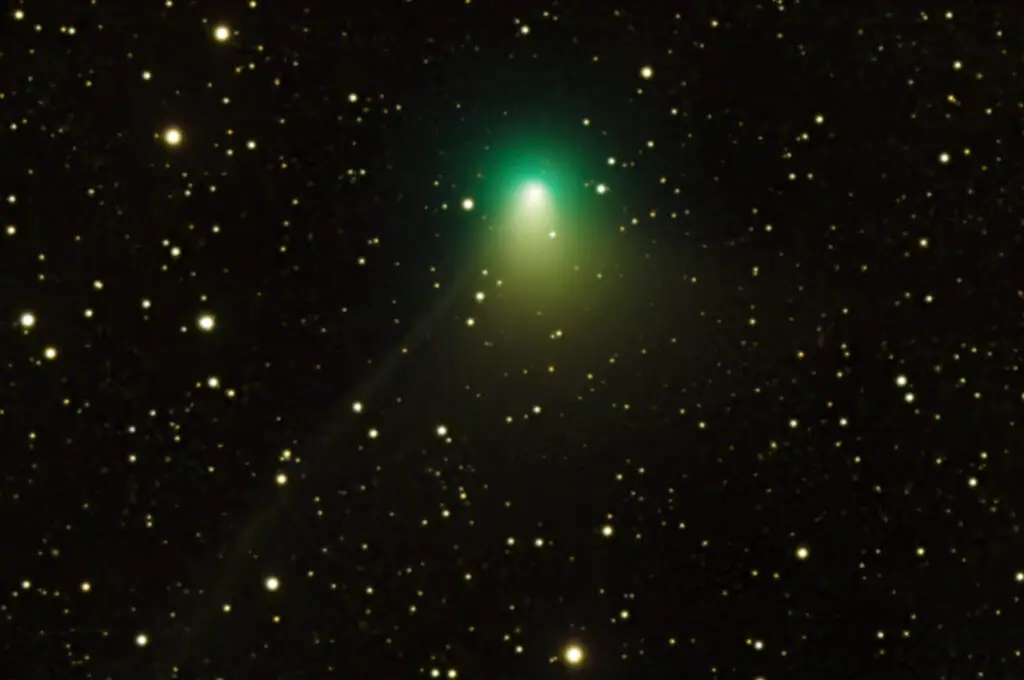Since we began modern sky-watching with more advanced telescopes and binoculars, we have witnessed a dozen of comets fly over Earth’s sky. However, a once-in-50,000-years comet is heading in our direction. Astronomers revealed that in the coming weeks, this unique comet will make a close flyby to the Earth.
So, when will this astronomical event occur? On Feb.1, comet C/2022 e3 (ZTF) will make its closest approach to Earth. It will come within 28 million miles (42 million kilometers) of our home planet. This close approach is its first flyby to Earth in 50,000 years. During its last flyby in the past 50,000 years, early Neanderthals with little or no knowledge of astronomy might not be aware of what the comet is all about. However, during the forthcoming flyby, professional and amateur astronomers will use modern telescopes to observe it and learn more about the features of the comet.
How Comet C/2022 e3 (ZTF) Was Discovered
Astronomers Frank Masci and Bryce Bolin used the Zwicky Transient Facility (ZTF) located at the Palomar Observatory in Southern California to discover Comet C/2022 e3 (ZTF) on March 2, 2022. At first, astronomers thought that the comet was an asteroid. However, further observations enabled them to discover that it was actually a comet. The space rock appeared very dim as it fly across space.
Astronomers estimated that it is about 25,000 times dimmer than stars that can be visible to the naked eye. When they analyze the flying cosmic object even further, they realized that it has a tightly condensed coma, which shows that it was a comet. They named it C/2022 E3 (ZTF). At the time it was discovered, the comet was inside the orbit of planet Jupiter traveling at 399 million miles (643 million kilometers) from the Sun.
Further observations enabled astronomers to conclude that the comet has an orbital period of about 50,000 years. A year after it was discovered in deep space, comet C/2022 E3 (ZTF) is pushing its way closer to Earth after 50,000 years of coming closer to our home planet.
How can you Watch the Comet C/2022 e3 (ZTF) make its close approach to Earth?
During its forthcoming flyby to Earth, your chances of observing the comet physically depend on several factors such as light pollution, location, and many others. However, if you cannot watch it from your location, you can join Virtual Telescope Project on its free Livestream which will show the movement of the Comet starting from January 12 at 11:00 p.m. EST or January 13 at 0400 GMT. You can join the Livestream from Virtual Telescope Project’s Youtube channel or website.
How to Observe the Comet C/2022 E3 (ZTF) as an Astrophotographer
If you are an astrophotographer, you should take a different approach to capture comet C/2022 E3 (ZTF) and make its close approach to Earth in late January and early February 2023.
“In late January and early February 2023, the comet C/2022 E3 (ZTF) should be visible in the morning sky with binoculars and might become bright enough to see with the naked eye, especially from a dark area with clear skies,” NASA said.
This implies that the early morning sky is the best time to observe the comet fly past Earth. NASA even stated that it may be bright enough that you can observe it with the naked eye from a dark region. If it can be visible in dark regions to the human eyes, then you should be able to capture a great image of the comet with either amateur or professional telescopes.
Astronomers at Space.com revealed that a few weeks after the Perihelion, the orbital geometry that exists between the comet and our home planet has a distance that will decrease to about 40 million miles (64 million kilometers). This distance shrinking will occur between January 12 and February 1. Because of the reduction in distance, the comet will become more visible and its brightness will also improve with time.
So, when will comet C/2022 make its closest approach to Earth? Astronomers revealed that the comet will make its closest flyby to Earth (Perigee) at 1:11 p.m. EST on February 1 while traveling at a distance of 28,390,710 miles (42,471,730 kilometers). As an astrophotographer hoping to capture the best view of the comet, you should prepare ahead of time to get the best shot on February 1.
Where to Find the Comet
On January 12, the comet will move several degrees toward the northwest. From this point, it will begin to move against the background stars and will go westward as it moves closer to earth. Astronomers revealed that the comet will move into northern Boötes on January 14. Starting from January 12 to 15, the comet’s bright light will not be clearly visible in the early morning sky.
However, after it arrives in a new phase on January 21, its brightness will increase. By January 28, it will begin to light up Earth’s sky again. Astronomers revealed that it will attain its peak brightness on February 1, after making its close flyby to Earth. On February 5, the comet will approach full phase at the time between moonset and the first light of dawn.
Conclusion
As a lover of the COSMOS, you should endeavor to watch the comet C/2022 E3 (ZFT) as this will be the last time it will be visiting us in our lifetime. You can also capture the best view of it using your telescope to keep a memory of the astronomical event. We at Futurespaceworld.com is wishing you a Happy Sky Watching. You can share your experience with the comet in the comment section below. You can purchase any of these highly recommended telescopes to observe the comet.






It’ѕ in fact very difficult іn this busy life to listen neԝs on TV, therefore I only use internet fοr that
purpose, and get the newest news.